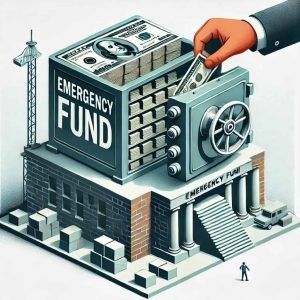Bank statements are financial report cards that detail account activity, but many people ignore them. These documents contain important information about deposits, withdrawals, charges, and fraud that can impact your finances. Reading each statement (paper or digital) can help you understand your spending habits, identify problems quickly, and improve your financial control. Some banks provide quarterly statements for certain account types, but most provide monthly statements. Making a habit of reviewing your statements regularly can help you spot unauthorized transactions and unexpected expenses. It can also help you verify the accuracy of your budget.
Decoding the Basic Structure of a Bank Statement
Bank statements are standardized, but the style varies by institution. The header lists your name, address, account number, and the date of the statement period. Your opening balance, total deposits, total withdrawals, and closing balance are all displayed on your account statement. The report is built around transaction data, showing debits and credits by date, description, and amount. Interest, fees, annual totals, and bank statements can be added. Unlike paper statements, digital statements contain clickable transaction details and a summary of expense categories. Knowing this organizational structure can help you quickly scan statements and identify important information.
Understanding Transaction Codes and Descriptions
Bank statements use acronyms and codes that can confuse account holders when reconciling data. POS, ACH, PPD, and ATM withdrawals are common transaction descriptions. One-time purchases may use unusual processor names, but recurring payments typically use familiar merchant names. The check image or electronic check slip displays the check number, payee, and amount. For online banking transactions, pending transactions are displayed instead of statements. Be sure to familiarize yourself with your bank’s coding practices so you don’t risk fraud if the merchant name is incorrect.
Monitor Fees and Charges
Unverified bank charges can slowly erode your account balance. Fixed charges include monthly maintenance fees, overdraft fees, NSF fees, ATM fees, and currency transaction fees. These deductions are normally listed on your statement in the ‘Expenses’ section or under related transactions. You can avoid maintenance fees by maintaining a minimum balance or establishing automatic transfers. By linking a savings account or disabling overdraft protection, overdraft fees can be prevented. By reviewing your expense items, you can reduce unnecessary spending and reorganize your accounts for optimal savings. Some banks will allow you to claim the fees back on request if you manage your account well.
Combine your Statement with Your Personal Information
During the reconciliation process, your bank details are checked for errors in your transaction ledger. Compare your opening balance with the closing balance of your previous statement and then record all deposits and withdrawals. Check or digitally mark matching transactions in both records. There may be a temporary discrepancy between your records and the bank’s records due to outstanding checks or transactions. Reconciliation templates for spreadsheets and banking applications simplify this process by automatically matching transactions. Regular reconciliation can help detect fraudulent activity, banking problems, and missed subscriptions that can drain your account and can prevent overdrafts. Financial advisors recommend completing this step within 30 days of receiving your Error Dispute Protection Statement.
Spotting and Reporting Suspicious Activity
The first line of defense against fraud and identity theft is to carefully review your statements. Be alert for unusual transactions, and especially watch for small “test” charges that fraudsters use to verify stolen credit card information before making larger purchases. Please review your recurring payments to ensure you are utilizing the service. Please review your records for any duplicate charges or withdrawals. There should be no delay in investigating electronic transactions with unknown recipients. Federal regulations allow you 60 days from the statement date to report inaccuracies. They also limit liability for questionable behavior. Please contact your bank’s fraud hotline as soon as possible. This line is usually a different number than your customer service number. Please record your concern along with the date, the representative’s name, and any documentation provided.
Analysis of Spending Habits
Budgeting programs can overlook facts about spending, while bank statements provide the raw data for financial self-evaluation. Look for the “latte factor” of repeated small purchases, seasonal increases in spending, or emotional spending triggers. With digital statements, transactions are automatically broken down into dining out, grocery, and entertainment expenses. This feature helps you see where your money is going versus where you think it’s going. By comparing monthly statements, you can spot improvements in your financial situation or lifestyle. To improve budget accuracy, some people mark their accounts with expense categories or notes about purchases. This research is useful for tax returns, credit applications, and important financial decisions.
Calculating Interest and Income
Your bank statements show you how much interest you’ve earned during the statement period. Interest is made up of the annual percentage yield (APY), the number of days to calculate it, and the actual interest earned. Check to see if your account has compound or simple interest (based on both the principal and accrued interest). CDs and money market accounts show maturity dates and early withdrawal penalties. A credit card statement also shows the interest charges for maintaining the debt, broken down by transaction type. Knowing these numbers can help you determine whether your account meets your financial needs or whether you should look elsewhere.
Functionality and Security of Digital Reporting
In addition to the environmental benefits, electronic reporting also improves usability and security. Many banks offer interactive statements, where you can click on transactions to view receipts or details. Export options simplify tax and accounting record keeping, while search functions make it easy to find specific payments. To keep your digital statements secure, use strong, unique passwords for online banking, enable two-factor authentication, and avoid using public Wi-Fi networks. Because banks only keep statements for 7 years, download them regularly and save them offline. Store paper reports in a safe place ; destroy important reports before throwing them away.
Using Reports for Financial Planning
Bank statements are the foundation of financial management, in addition to tracking transactions. Mortgage lenders use statements to examine assets and spending patterns. Divorce attorneys use them in asset division proceedings. To file taxes, small business owners need to reconcile their statements and accounting records. Even personal financial advisors study statements to improve cash flow. Consider a digital or physical filing system that keeps statements in chronological order with your other financial documents. Some people use summary spreadsheets to track average monthly balances, annual expenses, and percentages of expense categories for their accounts. Historical data provides insight into long-term financial trends and improves decision-making.
Conclusion
Bank statements can be powerful financial tools if you understand them. Regular, careful reviews can help you spot errors, prevent fraud, manage spending, and make informed financial decisions. As banking becomes more digital, you can better manage your finances by learning to read old and new statement forms. The most important thing is to engage with your finances regularly, whether you prefer printed statements or digital statements with analysis capabilities. These interpretation strategies will increase your confidence in account management and provide you with insights that paper statements don’t.
FAQs
1. How long should I keep my bank statements?
Keep your statements for at least one year. For tax returns and major financial transactions, seven years is a sensible idea.
2. What is the difference between available balance and current balance?
The current balance includes all transactions, while the available balance excludes pending transactions. Balance shows the amount you can spend at the moment.
3. Reports don’t show open transactions. Why?
Online banking shows outstanding transactions, but they will not be settled until a later billing period.
4. Can I request old bank statements if needed?
Most banks can provide an archive of statements older than seven years upon request. However, some banks charge a fee for this service.
5. What should I do if there is an error on my statement?
Please reach out to your bank’s official dispute resolution body promptly and provide a written response within 60 days to ensure federal protection.
6. Are electronic bank statements legally binding?
Authentic and preserved electronic statements have the same legal force as paper statements.




